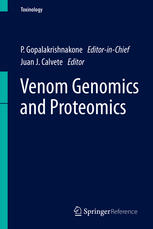

Most ebook files are in PDF format, so you can easily read them using various software such as Foxit Reader or directly on the Google Chrome browser.
Some ebook files are released by publishers in other formats such as .awz, .mobi, .epub, .fb2, etc. You may need to install specific software to read these formats on mobile/PC, such as Calibre.
Please read the tutorial at this link: https://ebookbell.com/faq
We offer FREE conversion to the popular formats you request; however, this may take some time. Therefore, right after payment, please email us, and we will try to provide the service as quickly as possible.
For some exceptional file formats or broken links (if any), please refrain from opening any disputes. Instead, email us first, and we will try to assist within a maximum of 6 hours.
EbookBell Team

5.0
38 reviewsThis volume provides the reader with recent advances in the fields of molecular toxinology, the biotechnological applications of venom toxins, and antivenom production. The content of the twenty chapters of Venom Genomics and Proteomics illustrates not only the enormous progress made since the implementation of omics technologies in the field of toxinology, but one also realizes the road still ahead to reach a holistic view of venomous systems. Advancement in high-throughput technologies in the field of venomics has resulted in the ability to generate comprehensive venom profiles for many species. However, research on snake genomes is still in its infancy, although such studies are eagerly awaited to gain insights into the evolutionary history of snake venom proteins, including the mechanisms that originated venom and the regulation of toxin expression. Fortunately, this objective is also at the reach of current omic technologies. Therefore it would not be unrealistic to predict a bright near future to the field of molecular toxinology.
Venom Genomics and Proteomics coversresearch into the venom of scaled reptiles (lizards and snakes), scorpions, spiders, ants and platypuses. Special consideration is given to a number of observations made in the area of snake venom and in the application of advanced genomics and proteomics techniques on a variety of venom samples. The final chapters give some insight into the potential clinical uses of venom derivatives and into the importance and challenges faced in the production and quality control of antivenoms.